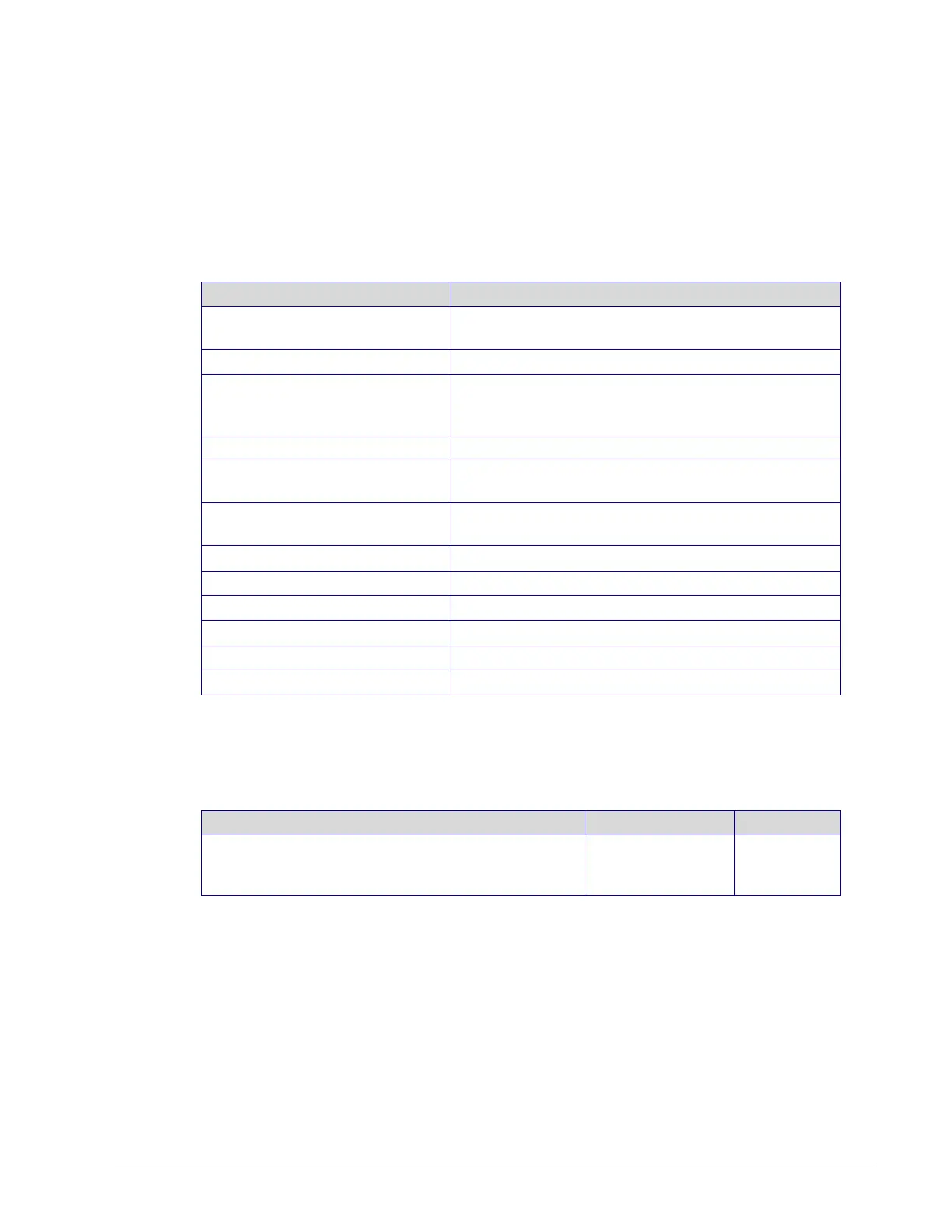BACnet MS/TP Communication Data Bus Fundamentals
ECLYPSE User Guide 115
Data Bus Physical Specifications and Cable
Requirements
Cables composed of stranded conductors are preferred over solid conductors as stranded
conductor cable better resist breakage during pulling operations. Distech Controls strongly
recommends that the following data bus segment cable specifications be respected.
Table 11-5: BACnet MS/TP Data Bus Segment Physical Specifications and Cable
Requirements
Twisted pair, 24 AWG (see also Metric Conversions
for Wire Gauge on page 173)
The shield on each segment is connected to the
electrical system ground at one point only; see Data
Bus Shield Grounding Requirements on page 119.
100-130 Ohms. The ideal is 100-120 Ohms.
Distributed capacitance between
conductors
Less than 100 pF per meter (30 pF per foot). The
ideal is less than 60 pF per meter (18 pF per foot).
Distributed capacitance between
conductors and shield
Less than 200 pF per meter (60 pF per foot).
Maximum length per segment
9600, 19 200, 38 400, and 76 800 baud
Daisy-chain (no T-connections)
120 ohms at each end of each segment
510 ohms per wire (max. of two sets per segment)
Shielded cable offers better overall electrical noise immunity than non-shielded cable.
Unshielded cable or cable of a different gauge may provide acceptable performance for
shorter data bus segments in environments with low ambient noise.
Table 11-6: Distech Controls Recommended Cable Types for BACnet MS/TP Data
Buses
300 meters (1000 feet), 24 AWG Stranded, Twisted
Pair Shielded Cable – FT6, Rated for Plenum
Applications
Distech Controls BACnet cable offers the best performance over the full range of baud rates,
cable lengths, and number of connected devices. This is primarily due to lower conductor-to-
conductor capacitance of this cable.
